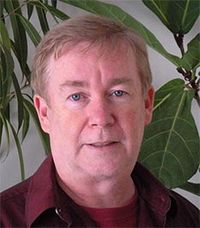CAZypedia celebrates the life of Senior Curator Emeritus Harry Gilbert, a true giant in the field, who passed away in September 2025.
CAZypedia needs your help!
We have many unassigned pages in need of Authors and Responsible Curators. See a page that's out-of-date and just needs a touch-up? - You are also welcome to become a CAZypedian. Here's how.
Scientists at all career stages, including students, are welcome to contribute.
Learn more about CAZypedia's misson here and in this article. Totally new to the CAZy classification? Read this first.
Difference between revisions of "User:Daniel Cosgrove"
Harry Brumer (talk | contribs) (Created page with "200px|right '''This is an empty template to help you get started with composing your User page.''' You should begin by opening this page for ed...") |
|||
| (2 intermediate revisions by the same user not shown) | |||
| Line 1: | Line 1: | ||
| − | [[Image: | + | [[Image:Cosgrove_photo_cropped_v_small.jpg|200px|right]] |
| − | + | Born at a very early age, Daniel Cosgrove discovered the joys of plant biology as a youngster who examined plant tissues with the aid of a microscope that belonged to his mother when she was a youngster. She also was complicit with his early experiments on her beloved begonias and African violets, allowing him to grind up their leaves to extract pigments and separate them by paper chromatography. Yielding to the ineluctable pull of time, he later earned a bachelor’s degree in Botany at the University of Massachusetts and a doctoral degree in Biological Sciences at Stanford University. After postdoctoral stints at the University of Washington and the Nuclear Research Center in Juelich, Germany, Cosgrove joined the faculty of the Biology Department at Penn State University, where he is currently Professor and Holder of the Eberly Chair of Biology and directs the DOE Center for Lignocellulose Structure and Formation. His research interests encompass the general area of plant development, with a specific focus on the mechanisms of plant cell enlargement and cell wall loosening. His lab’s discovery of expansin in the 1990s has sprouted many branches, ranging from the crystal structure and biochemistry of expansins, to the molecular evolution of this gene family and the evolutionary development of new expansin forms as major allergens in grass pollen. Current research is focused on the molecular and biophysical mechanisms of plant cell wall assembly and growth <cite>Cosgrove2018</cite>. | |
| − | |||
| − | |||
| − | |||
| − | |||
| − | |||
| − | |||
| − | |||
| − | |||
| − | |||
| − | |||
---- | ---- | ||
<biblio> | <biblio> | ||
| − | # | + | #Cosgrove2018 pmid=29138349 |
</biblio> | </biblio> | ||
Latest revision as of 11:27, 24 May 2018
Born at a very early age, Daniel Cosgrove discovered the joys of plant biology as a youngster who examined plant tissues with the aid of a microscope that belonged to his mother when she was a youngster. She also was complicit with his early experiments on her beloved begonias and African violets, allowing him to grind up their leaves to extract pigments and separate them by paper chromatography. Yielding to the ineluctable pull of time, he later earned a bachelor’s degree in Botany at the University of Massachusetts and a doctoral degree in Biological Sciences at Stanford University. After postdoctoral stints at the University of Washington and the Nuclear Research Center in Juelich, Germany, Cosgrove joined the faculty of the Biology Department at Penn State University, where he is currently Professor and Holder of the Eberly Chair of Biology and directs the DOE Center for Lignocellulose Structure and Formation. His research interests encompass the general area of plant development, with a specific focus on the mechanisms of plant cell enlargement and cell wall loosening. His lab’s discovery of expansin in the 1990s has sprouted many branches, ranging from the crystal structure and biochemistry of expansins, to the molecular evolution of this gene family and the evolutionary development of new expansin forms as major allergens in grass pollen. Current research is focused on the molecular and biophysical mechanisms of plant cell wall assembly and growth [1].
